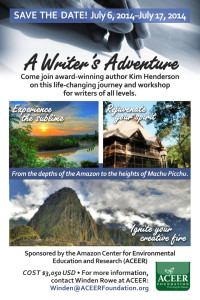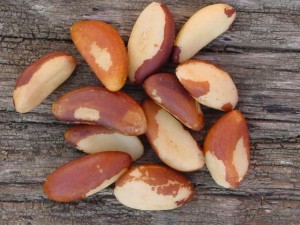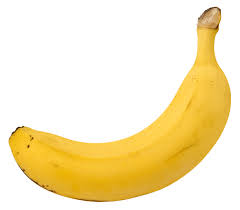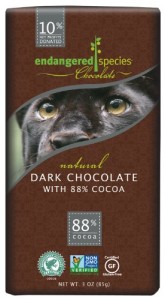While taking action to save our rainforests is a serious matter, it can also be fun and easy when you make it a simple part of your everyday life. For instance, there’s nothing like luxuriating your body with the rich oils, tropical scents and restorative herbs that are sustainably extracted from rainforest botanicals. Yes, simply doing this regularly is a fantastic rainforest-saving action you can take that will make you feel great inside and out!
So here’s the scoop…
The rainforest is rich with plants and herbs containing rejuvenating, healing properties for beautiful hair and skin. Responsible manufacturers are finding that sustainably extracting beautifying rainforest botanicals for their shampoos, body washes, soaps and moisturizers can be both profitable and impactful in the fight against deforestation. When you buy these types of products, new revenue streams are created for sustainable extraction of non-timber forest products from the rainforest. It helps to make the rainforest more valuable alive and intact than logged and cleared for cattle grazing and agriculture. For oftentimes poverty-stricken and desperate local populations and indigenous tribes, it means maintaining their way of life. In fact, the more ways these people have to make a living from the rainforest without destroying it, the more likely the rainforest will be preserved.
Here’s what you do…
Use personal-care products made from sustainably extracted rainforest botanicals! The key is finding quality products that work and that truly benefit the rainforest. These types of products are increasingly more available. You can find them online and at beauty-supply stores, pharmacies, department stores and health food stores.
To get you started, here are several companies that are making fine personal-care products and helping rainforests:
Ojon
This is a fantastic story. Ojon, a Canadian beauty-care company (within the Estée Lauder Companies), sources wild-crafted ojon palm nut oil (the foundation of the entire hair-care line) from the Tawira people of northeastern Honduras. The Tawira, known as “the people of beautiful hair,” have harvested the rare oil from the ojon tree, which grows in this area, for centuries. A partnership with the Rainforest Alliance and the Mosquitia Pawisa Agency for the Development of the Honduras Mosquitia (MOPAWI), a local nonprofit group that works on behalf of indigenous communities in the region, ensures sustainable extraction, fair wages and rights to their resources for the Tawira as well as the Miskitos, Tawahkas, and Pech—other local indigenous tribes. The ojon oil and other ingredients such as cacao and swa oil are collected in a handcrafted process consistent with ancestral practices. Ojon products are pricey, but the customer reviews I saw were mostly favorable.
Alba Botanica
Alba Botanica has an entire line of rainforest skin and hair-care products. The Andiroba and Brazil nut oils it sources from the rainforest are certified by the Rainforest Alliance to Forest Stewardship Council standards. Alba Botanica also supports rainforest education and sustainability through the AmazonCenter for Environmental Education and Research. These products are widely available at health food stores and beauty stores. They are reasonably priced.
Alaffia
The owner and founder of Alaffia, Olowo-n’djo Tchala, was born and raised in Togo, Africa. His vision for the company was not only to create quality, natural products, but to help the women of Togo on the West African coast. And that he has done. Women source most of the ingredients sustainably, earning fair wages. Although shea nuts, the main ingredient used in Alaffia’s body-care products, are sourced from wild trees of the African savanna, not the rainforest, we include this company anyway as some of its ingredients, such as Kpangnan butter from the African butter tree, are sustainably sourced from the rainforest. Ten percent of Alaffia’s sales go toward community enhancement projects in Togo, West Africa and locally in Washington state, where the company is headquartered. These products are traditionally handcrafted, organic and effective. Their uniqueness and far-reaching positive impact on African women’s lives make them wonderful gifts too.
The Body Shop
The Body Shop has had a long-term commitment to fair trade that goes back nearly 20 years. Roughly 25,000 people in more than 20 countries now receive fair wages and working conditions thanks to consumer purchases. Some of these people are sourcing ingredients from tropical areas, giving them a viable alternative to rainforest-destructive activities.
The Body Shop products containing cocoa butter and Brazil nut oil are helping to preserve the rainforest.
The cocoa beans used to make cocoa butter come from the Kuapa Kokoo company in Ghana, a fair trade cooperative with more than 30,000 small-scale farmers. The money made by the cooperative enables the development of community projects such as schools and village wells in addition to providing the farmers with income to support their families. Many women now have been empowered and participate in the cooperative. The Body Shop gets community trade brazil nut oil from Peru, sourced through a unique fair trade program which ensures all producers and workers are paid a fair and living wage. The nuts are harvested from small farms and grown using traditional techniques, allowing the farmers to earn a fair income from an activity that fits their traditional way of life.
Another excellent skin care line that benefits the rainforest is called Amazon Rain (formerly Lluvia) from the Amazon Herb Company. Each product is made with sustainably extracted organic and wild-crafted botanicals that are collected by workers from Amazon communities who are paid fair wages. A percentage of Amazon Rain profits helps fund the AmazonCenter for Environmental Education and Research.
There are loads of terrific products out there. Natural health retailers have fantastic personal-care product departments usually with knowledgeable staff available to help you. Ask them about products that benefit the rainforest and have fun exploring them.
There’s nothing more beautiful than pampering your body with products that keep the welfare of the rainforest and its people in mind!
OJON
www.ojon.com
Mostly hair-care and a few body-care products
Available online, on QVC,
at Sephora and fine
beauty-supply retailers
Alba Botanica
www.albabotanica.com
Available at Whole Foods and other fine health retailers
alaffia
www.alaffia.com
Available at Whole Foods and other fine health retailers
The Body Shop
RESOURCES
Ojon
www.ojon.com
Alba Botanica
www.albabotanica.com
Alaffia
www.alaffia.com
The Body Shop
www.thebodyshop-usa.com
Amazon Rain




